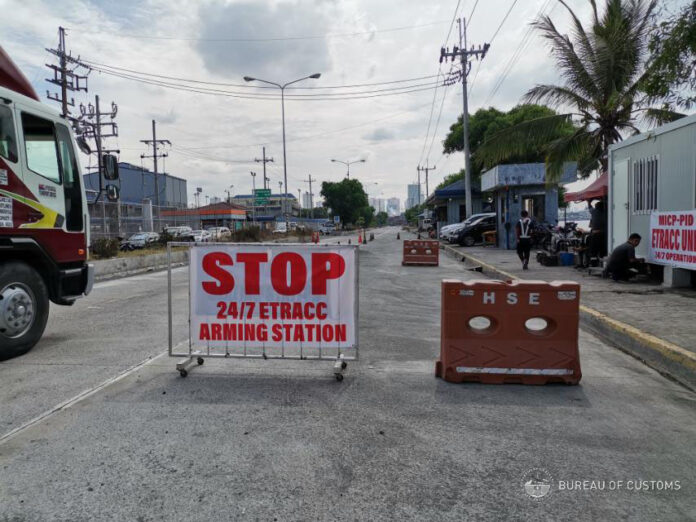-
The Bureau of Customs Manila International Container Port activated on April 15 its Electronic Tracking of Containerized Cargoes (E-TRACC) arming station
-
The arming station facilitates seamless and efficient arming and removal of trackers and provides office space for MICP’s E-TRACC team
-
Additional trackers were also acquired, raising the collection district’s markers to 2,000
-
E-TRACC tracks inland movement of containerized cargoes during transit and transfer to other customs territories and facilities
The Bureau of Customs (BOC)-Manila International Container Port (MICP) has activated on April 15 its Electronic Tracking of Containerized Cargoes (E-TRACC) arming station to bolster implementation of the system that tracks inland movement of containerized cargoes during transit and transfer to other customs territories and facilities.
The arming station is designed to facilitate seamless and efficient arming and removal of trackers and provides office space for MICP’s E-TRACC team, BOC said in a statement.
Additional trackers were also acquired, raising the collection district’s functioning markers to 2,000.
E-TRACC is a web-based system implemented by BOC last year to track inland movement of containerized cargoes during transit and transfer to other customs territories and facilities. It allows BOC to track, monitor, and audit the location and condition of cargoes, as well as obtain real-time alarms on diversion and tampering of cargoes.
READ: BOC orders e-tracking of cargoes in transit
BOC earlier said the E-TRACC System is “an effective tool for preventing erroneous delivery of containers, thus preventing issues on missing containers or unauthorized diversion of the carriers and misdelivery.”
READ: BOC’s E-TRACC detects numerous violations of cargo carriers
Since the June 2020 rollout nationwide until early March this year, the E-TRACC system has recorded 699 corridor alerts (deviation from registered routes), 32 security alerts, 18 unauthorized departures, and 84 unauthorized end trips. Corresponding penalties were charged against the violators.
Under Customs Memorandum Order (CMO) No. 04-2020, which implements the E-TRACC system, an electronic customs seal (ECS) is required during the transfer of cargo to a container yard/container freight station or other customs facilities and warehouses; transit of cargo bound for Free Zones, inland customs office, depots, or terminals; transit to customs bonded warehouse (CBWs); export of cargo from Free Zones, inland customs office, depots or terminals, and CBWs to port of loading; and transfer of shipments subject to further verification and/or monitoring.
BOC said the trackers, or the ECS, are designed to alert any tampering and allows for the swift action of BOC’s Enforcement and Security Service Quick Reaction Team to prevent the possibility of smuggling activities.
All container vans covered by CMO 04-2020 should be affixed with an ECS before being cleared to depart from the starting point or point of discharge for the voyage to the end point or point of destination.
Except when warranted under CMO 04-2020, customs cargo clearance must be fully completed before any shipment can be sealed with an ECS.





